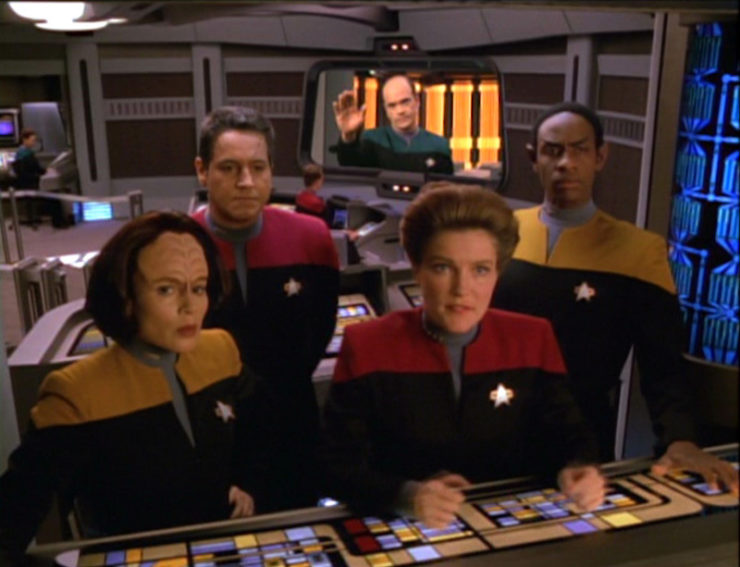Star Trek: Voyager First Season
Original air dates: January – May 1995
Executive Producers: Rick Berman, Michael Piller, Jeri Taylor
Captain’s log. After setting up the Maquis-Federation conflict on both The Next Generation and Deep Space Nine, Voyager debuted in January 1995, kicking off the brand-spanking-new United Paramount Network with a Starfleet ship searching for a Maquis vessel that disappeared in the Badlands. Both ships were hijacked across the galaxy by a powerful, dying alien being who cared for a species known as the Ocampa.
Voyager becomes trapped in the Delta Quadrant, forced to destroy the Ocampa caretaker’s array to keep it out of the hands of the Kazon—one of several antagonistic species in this region of space they meet. They also come into conflict with the Vidiians—who harvest other species for body parts due to a disease they all have called the Phage—and the Sikarians—who start out friendly, but become less so.
Buy the Book
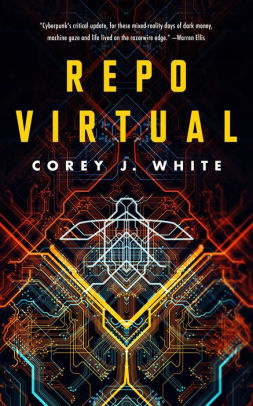

Repo Virtual
Several of Voyager’s crew die in the initial jaunt to the Delta Quadrant, with Maquis crew filling in their positions. They also take on one of the Ocampa, Kes, who grows food in a hydroponic bay and serves as a nurse to the Emergency Medical Hologram (which has been pressed into permanent service as the only medical professional on board), as well as her paramour, a Talaxian scavenger named Neelix, who serves as native guide, cook, and morale officer.
Their initial adventures range from finding a micro-wormhole to the Alpha Quadrant—but, sadly, the other end is in Romulan space twenty years earlier—to a singularity to numerous first contacts which go pear-shaped in various ways. They also acquire some trading partners.
The first season was already shortened due to starting in January, but the final four episodes were held back for the second season, in part to allow the season to start sooner, so the fledging network could get a jump on its competition, starting the season the last week in August instead of after Labor Day, so they’d have new episodes before any of the “big four” networks.
Highest-rated episode: “Jetrel,” the only 10 this season, and which earned it, as it’s one of Voyager’s best.
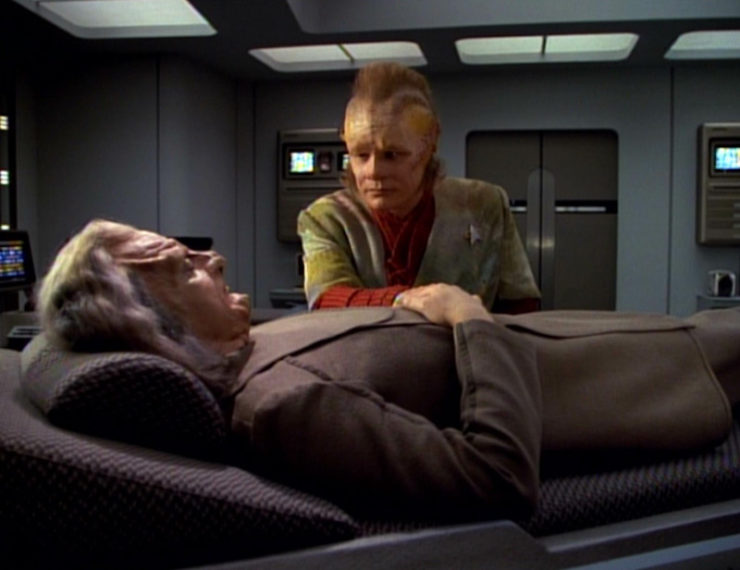
Lowest-rated episode: “Faces” with a 3, as I didn’t think much of their riff on “The Enemy Within” with B’Elanna Torres.
Most comments (as of this writing): “Caretaker” with 169. Not surprising that the first episode brought out the most comments. Honorable mention to “Phage,” as the introduction of the Vidiians has 135 comments and is the only other episode to so far reach three digits.
Fewest comments (as of this writing): “Faces” with 35. Apparently the show’s lowest-rated episode also wasn’t all that comment-worthy…
Favorite Can’t we just reverse the polarity? From “Parallax“: Neelix explains to Kes that an event horizon is a force field surrounding a singularity, which is so totally what it isn’t. This wouldn’t be so bad—I remember one person telling me years ago that this was just what Neelix thought it was and he was talking out his hat to Kes—but (a) none of the bridge officers correct him and (b) much more to the point, the rest of the episode treats the event horizon like a force field, when it is, in fact, just a “point of no return” orbiting a singularity that has no mass or shape.
Favorite There’s coffee in that nebula!: From “The Cloud“: This is the episode where this phrase comes from, as Janeway is desperate for coffee, not wanting to use up all her replicator rations on the beverage, nor is she thrilled with Neelix’s coffee substitute.
She also pretends not to know anything about pool (“Is this billiards or pool?” “Right, pool is the one with pockets”) before running the table on everyone in two seconds flat.
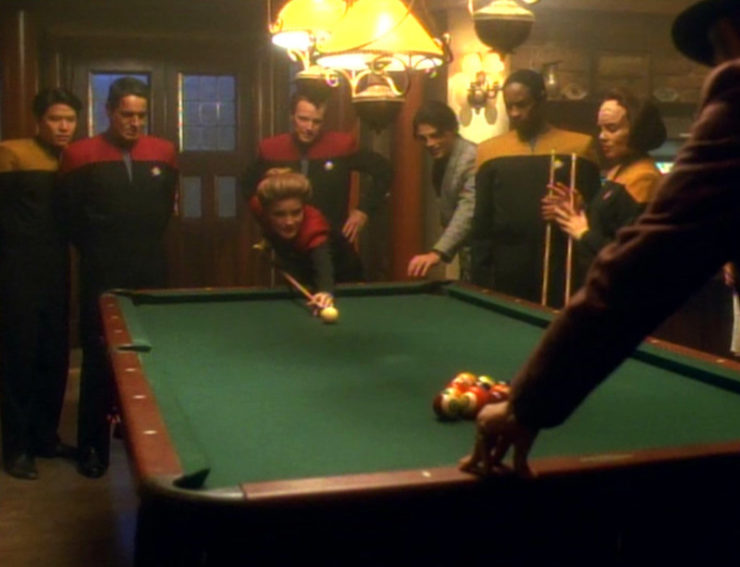
Favorite Mr. Vulcan: From “Prime Factors“: Tuvok, in the fine tradition of Spock in “The Menagerie” and Valeris in The Undiscovered Country, uses logic to justify spectacularly illegal behavior.
Favorite Half and half: From “State of Flux“: Torres proves she’s not Montgomery Scott, as she makes it clear that when she says she needs a day to do something, it means she really does need a day and she can’t shave the estimate because the captain says so.
Favorite Forever an ensign: From “Heroes and Demons“: Kim has all of one line of dialogue at the very end of the episode, but at least he gets to wear a cool costume while he does so.
Favorite Everybody comes to Neelix’s: From “Phage”: Neelix has taken over the captain’s private dining room and turned it into a galley (and also a fire hazard), so he can make food with the fruits and vegetables Kes has been growing in hydroponics. Janeway is dubious, and also annoyed that he did so without asking her, but after he gets his transplanted lungs, Janeway says she’s looking forward to tasting his meals.
Favorite Please state the nature of the medical emergency: From “Phage”: The EMH hits on the notion of creating holographic lungs for Neelix, since the holoemitters can create solid matter. However, it only works if Neelix never moves a muscle.
He is also getting increasingly cranky over his lack of staff and his need to be on call constantly, particularly if it means constant care for Neelix (though that becomes moot when the transplant option becomes viable). Kes gives him a pep talk.
Also he demonstrates how holograms are solid by slapping Paris. Which was epic.
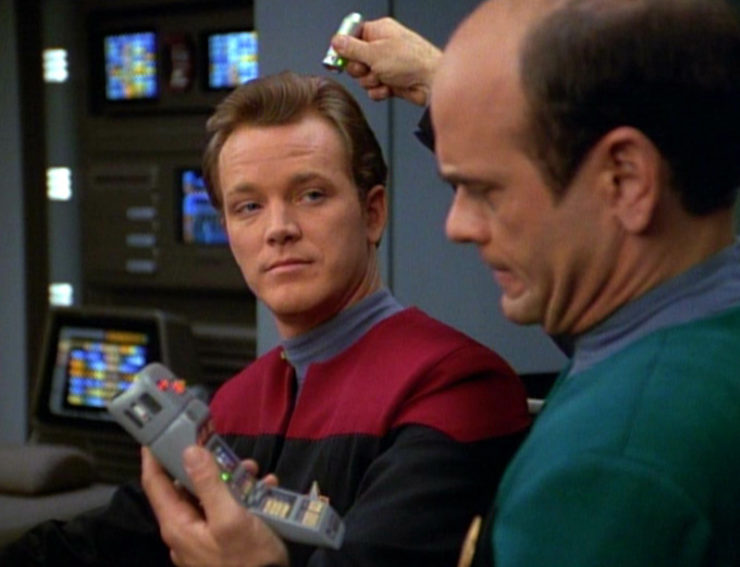
Favorite What happens on the holodeck, stays on the holodeck: From “Learning Curve“: Janeway has progressed to the part of her Gothic holonovel where Mrs. Davenport meets the (rather obnoxious) children she’s now responsible for, Henry, the Viscount Timmons, and Lady Beatrice. The urging by Lord Burleigh to avoid the fourth floor in “Cathexis” is possibly given more context by Beatrice insisting that her mother isn’t dead and she saw her yesterday.
The holodeck is later used by Tuvok for training by re-creating the bridge for a war game simulation, and then again to try to get to know Dalby over a game of pool at Chez Sandrine.
Favorite No sex, please, we’re Starfleet: From “Faces”: At one point, B’Elanna tries to convince Sulan to let her out of her restraints by waxing rhapsodic about Klingon women’s sexual prowess. This doesn’t work, and probably at least partly leads to Durst’s death, since Sulan knows that B’Elanna finds him repulsive, but figures if he grafts a friend’s face onto his head, she’ll be more inclined toward him.
Favorite Welcome aboard: Fittingly for the inaugural season, several recurring guests make their debuts in this season: Josh Clark as Joe Carey, Martha Hackett as Seska, Tarik Ergin as Ayala, Tom Virtue as Walker Baxter, Anthony De Longis as Maje Culluh, Derek McGrath as Chell, and Judy Geeson, Angela Dohrmann, Larry A. Hankin, Michael Cumptsy, Thomas Dekker, and Lindsay Haun as various recurring holodeck characters.
Alicia Coppola, Jeff McCarthy, and Scott Jaeck all appear in “Caretaker” as members of Voyager‘s crew who do not survive the unexpected trip to the Delta Quadrant, and whose characters are utterly, totally, completely forgotten as if totally irrelevant by the second hour of the episode.
Trek regulars Scott MacDonald (Rollins in “Caretaker”), Vaughn Armstrong (Telek R’Mor in “Eye of the Needle“), Jerry Hardin (Neria in “Emanations“), Michael Keenan (Hrothgar in “Heroes and Demons”), Carolyn Seymour (Mrs. Templeton in “Cathexis”), Brian Markinson (Durst in “Cathexis” and “Faces,” and also Sulan in the latter episode), and James Sloyan (the title character in “Jetrel”) all return to the franchise at various points to play new roles.
Three superb character actors show up and kick serious ass: Ronald Guttman as the sleazy Gathorel Labin in “Prime Factors,” Marjorie Monaghan as the passionate Freya in “Heroes and Demons,” and Rob LaBelle as the fast-talking Talaxian prisoner in “Faces.”
But the top spot has to go to Armin Shimerman and Richard Poe for their appearances in “Caretaker” as, respectively, Quark and Gul Evek, thus making them the first actors to have played the same role on three (or more) different Trek series, having both played the roles on TNG and DS9. They will later be joined by Jonathan Frakes (TNG, DS9, Voyager, Enterprise, Picard), Marina Sirtis (TNG, Voyager, Enterprise, Picard), John deLancie (TNG, DS9, Voyager), Michael Ansara (the original series, DS9, Voyager), Brent Spiner (TNG, Enterprise, Picard), and Sir Patrick Stewart (TNG, DS9, Picard).
Favorite Do it: From “The Cloud”:
“A nebula? What were we doing in a nebula? No, wait, don’t tell me—we were ‘investigating.’ That’s all we do around here. Why pretend we’re going home at all?”
–The EMH, cranky about Voyager’s tendency to be all Starfleety instead of just going the fuck home.
Favorite Trivial matter: Probably from “Caretaker,” as it was the longest, and gave me the chance to mention my own The Brave and the Bold Book 2, one of two Trek tales (the other being John Vornholt’s Double Helix: Quarantine) that took an extensive look at Chakotay’s Maquis cell pre-“Caretaker.”
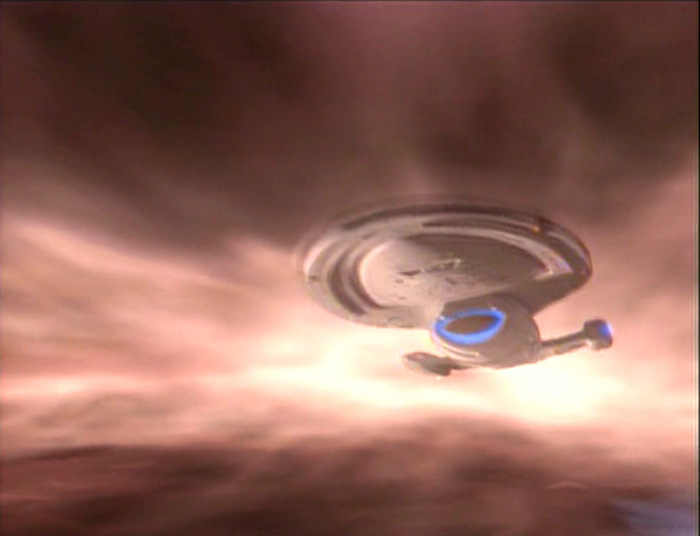
Set a course for home. “At ease before you strain something.” My biggest issue with Voyager when I watched it as it was happening twenty-five years ago remains my biggest issue with it while rewatching it two-and-a-half decades later: it doesn’t properly embrace its premise.
In 1994, Paramount spent a great deal of time and effort to promote Voyager, not in the least because it was the flagship show of a new network. Five hours of TNG and DS9 (the former’s “Journey’s End” and “Preemptive Strike,” the latter’s “The Maquis” two-parter and “Tribunal“) were dedicated to setting up the concept of the Maquis, which was solely done in order to facilitate Voyager. The new show was to have as its central conflict the struggle to get home while two crews, one Starfleet, one Maquis, had to integrate.
Even if you hadn’t been hit with all that hype, though, even if you hadn’t watched TNG or DS9, “Caretaker” itself set up that premise quite nicely. You had the general resentment between Maquis in Starfleet that was established on the other two shows, but also tensions right there in the pilot episode itself, most notably with Tuvok, who infiltrated Chakotay’s cell on Janeway’s behalf, and Paris, who sold Chakotay out to get out of jail.
On top of that, you’ve got the crew stranded 70,000 light-years from home, which means the chances of getting back home in the crew’s lifetime is infinitesimally small, even taking into account things like wormholes and spatial anomalies and tetryon-based transporters and so on.
Neither of these aspects played nearly enough of a role in the season’s episodes. The conflict between Maquis and Starfleet crew members was barely even acknowledged, not even in episodes where it would’ve played a role—”Cathexis,” e.g.—and the one episode where it was front and center (“Learning Curve”), it was utterly, totally, thoroughly botched.
And at no point does it appear that the crew is actually struggling. Oh, lip service is paid to replicator rations, but it’s a minor aspect, and mostly an excuse to do kitchen comedy with Neelix making his semi-successful dishes. But everyone does their duty and wears their uniforms and follows Starfleet regs and there are no difficulties whatsoever.
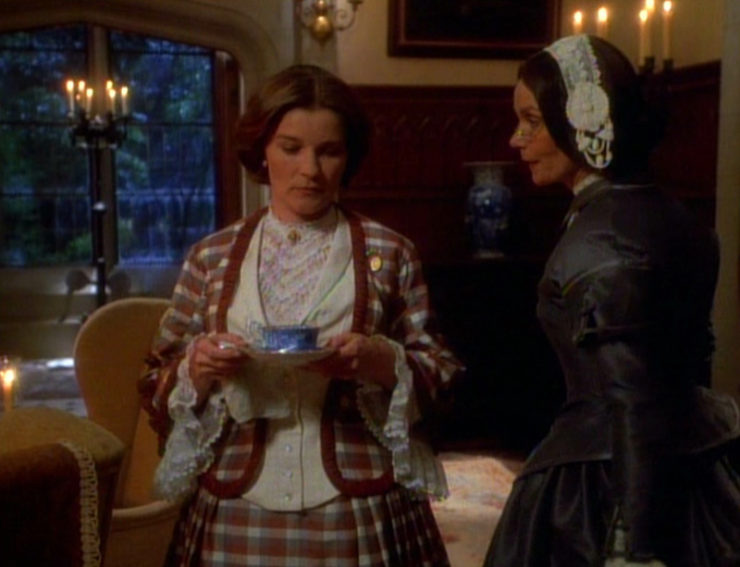
Worse, they come up with a nonsense notion that holodecks run on a different, independent power system, which is absurd on every level, solely so the crew can still go to the holodeck and play dress-up, because heaven forfend we not have access to the holodeck. True, it also gave us “Heroes and Demons,” which was delightful, but still, holy crap! I mean, first of all, this is Star Trek where characters come up with crazy-ass workarounds all the time. You’re trying to tell me that Torres, the great out-of-the-box-thinking Maquis engineer, can’t come up with a way to dump holodeck power into other systems so they don’t have power-supply issues?
It’s particularly maddening because the makings of a great show are here, and it only manages to be good. In Kate Mulgrew, Robert Picardo, Roxann Dawson, Jennifer Lien, and Tim Russ they have a solid acting core. Mulgrew in particular shines as the science-nerd captain who also cares deeply for her crew and is incredibly protective of them—and also of Starfleet and its values.
They also have Ethan Phillips, woefully misused as a comic-relief doofus except for one episode (“Jetrel,” where Phillips is magnificent).
Unfortunately, they also have Robert Duncan McNeill being skeevy as Paris, with the added lack-of-bonus of some writers being inexplicably more interested in Paris’s redemption than focusing on the actual lead of the show. Paris was set up as a self-centered ass, and yet the show twists itself into a pretzel to show that he’s not that bad a guy.
The season is full of strong individual episodes, and episodes like “Eye of the Needle,” “Prime Factors,” and “Jetrel” showed what the show could be when it cuts loose. “Eye of the Needle” is a brilliant tease-with-getting-them-home episode. “Prime Factors” turns the Prime Directive nicely on its ass and shows the ethical dilemma of getting home at all costs versus staying true to your principles. “Jetrel” presents a brilliant character study. All three have fantastic guest actors in Vaughn Armstrong, Ronald Guttman, and James Sloyan, which also helps.
My goal in this rewatch is to reconsider Voyager, which I was not fond of on initial airing. I still have issues, but I find myself more looking forward to the upcoming episodes. Part of it is that I know that Voyager is never going to embrace its premise, so while I will likely still continue to sometimes ding individual episodes, it’s something I already know is a given.
Part of it is also that the biggest strike against Voyager‘s first season when it aired in 1995 was that it was airing alongside the latter half of DS9‘s third season, which is a really tough comparison, as the latter show was firing on all thrusters at that point. It was sometimes irritating to watch something like “Improbable Cause” and “The Die is Cast,” which upended the status quo of Star Trek‘s socio-political structure, and then see the show that should entirely be about consequences not really deal with them with any depth.
In 2020, though, I find myself enjoying many aspects of the show—in particular, the strength and compassion and science-geekery of Janeway, the spectacular snarkiness of both the EMH and Tuvok, and the lovely voice of Jennifer Lien.
So Thursday, we’ll kick off season two with “The 37’s.”
Warp factor rating for the season: 5
Keith R.A. DeCandido is grateful for everyone who has commented on this rewatch so far. You guys are great.










